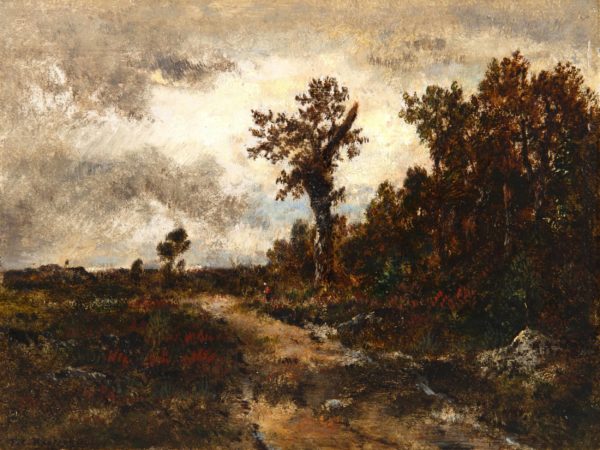Roadway in the Forest of Fontainebleau, 1845-1850
Oil on panel, H. 0.19 m; W. 0.24 m
Signed lower left: TH. Rousseau
Provenance: Private collection
When Théodore Rousseau settled in Barbizon near Fontainebleau, in 1836, he was only 24 years old, but was already very well known in artistic circles. He quickly became a symbolic figure in the Barbizon school. Throughout the 1830s and ‘40s, he went on lengthy trips across France, greatly appreciating the country’s geographical diversity. These numerous explorations of Normandy, the Jura and Auvergne were sources of inspiration, writings and memories alike. He would choose a place or a particular motif, and observe it over the course of many hours to be sure to create a lasting imprint on his memory. Rousseau’s method was to explore what he saw in nature, then produce a number of sketches and complete the final work, from memory, back in his studio. The tree was an important subject in his works. Throughout his career, he made countless sketches of trees, notably from the Forest of Fontainebleau. His landscapes are marked by a deep connection with nature and sometimes even violent emotion. Passing in turn from romanticism to naturalism, he also foresaw certain impressionist trends. Along with Corot, he was the top French landscape painter of the mid-19th century.
Our painting, which dates to 1845-50, shows Théodore Rousseau’s development towards a highly innovative visual concept. He has added opalescent and transparent layers to extremely varied touches applied lightly and spontaneously, aiming to create an effect of depth and materiality.
